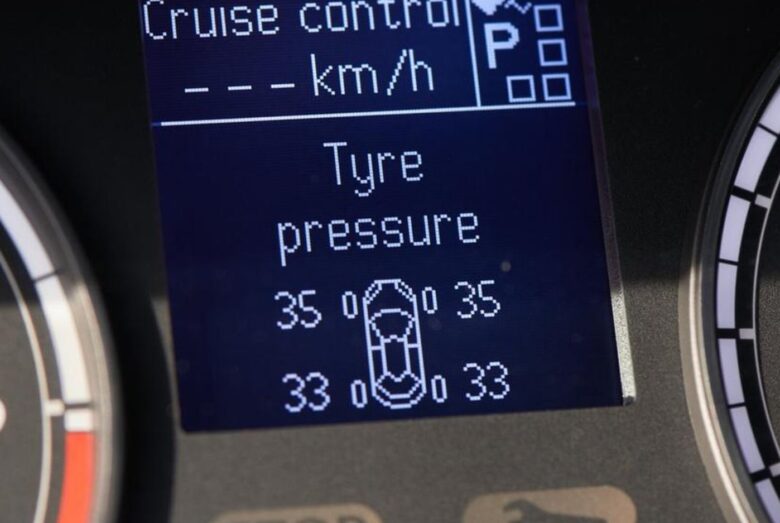Tire pressure monitoring systems have revolutionized vehicle safety by ensuring optimal tire pressure and reducing the risk of accidents. TPMS continues to evolve as technology advances, with exciting trends and innovations on the horizon. In this article, we will explore the predicted future of TPMS, covering advancements in sensor technology, enhanced safety features, energy efficiency, user experience, industry adoption, regulatory frameworks, and more. Join us as we dive into the captivating world of TPMS innovations.
Contents
- Evolution of Tire Pressure Monitoring Systems
- Current Challenges and Limitations
- Predicted Trends
- Innovations in TPMS
- Enhanced Safety Features
- Energy Efficiency and Environmental Considerations
- User Experience and Convenience
- Industry Adoption and Market Trends
- Regulatory Framework and Standards
- Impact on Vehicle Maintenance and Service
- Data Analytics and Predictive Maintenance
- Cybersecurity
- Ethical and Privacy Considerations
- Case Studies and Success Stories
Evolution of Tire Pressure Monitoring Systems
TPMS has come a long way since its inception. We’ll explore the early warning systems that paved the way for TPMS and compare direct and indirect TPMS technologies. Additionally, we’ll delve into the impact of regulatory advancements on TPMS development and adoption.

Source: thestar.com
Current Challenges and Limitations
Despite their effectiveness, existing TPMS technologies face challenges such as accuracy issues, maintenance difficulties, and compatibility concerns. We’ll discuss these limitations in detail and explore the hurdles that must be overcome for future innovations.
Predicted Trends
The future of TPMS holds exciting possibilities. We’ll examine how TPMS integrates with autonomous vehicles, enabling self-driving cars to monitor tire pressure. Advancements in sensor technology are also on the horizon, promising more intelligent and reliable sensors. Furthermore, we’ll explore the potential of wireless connectivity in TPMS data transmission buy direct from guta.
Innovations in TPMS
Intelligent algorithms are revolutionizing real-time tire pressure monitoring, enabling proactive maintenance and enhancing overall safety. Machine learning and AI are being leveraged to improve TPMS performance, while intelligent tire technology, embedding sensors within the tire itself, opens up new avenues for tire monitoring.
Enhanced Safety Features
Tire temperature and tread depth monitoring prevent blowouts and optimize traction. We’ll explore how TPMS integration with vehicle stability control systems enhances road safety.

Source: advpulse.com
Energy Efficiency and Environmental Considerations
With a growing focus on sustainability, TPMS plays a vital role in achieving energy efficiency. We’ll explore how low-rolling-resistance tires and TPMS contribute to fuel efficiency. Additionally, we’ll delve into the use of eco-friendly materials and manufacturing processes in tire production and the impact of TPMS on reducing carbon emissions.
User Experience and Convenience
The integration of TPMS with smartphones allows drivers to monitor tire pressure from the convenience of their devices. Predictive maintenance and alerts enhance comfort, ensuring timely action and reducing potential risks. We’ll also explore user-friendly interfaces and visualizations that make TPMS more accessible.
Industry Adoption and Market Trends
TPMS is gaining momentum in the commercial vehicle sector. We’ll discuss the growing demand for TPMS in various industries and the importance of OEM partnerships and collaborations. Furthermore, we’ll analyze market projections and explore the potential for future growth.
Regulatory Framework and Standards
Government regulations and mandates have played a pivotal role in driving the adoption of TPMS. We’ll examine the existing regulatory landscape and discuss harmonization efforts for global standardization. Additionally, we’ll address compliance challenges and shed light on future developments in TPMS regulations.

Source: hilltoptoyota.ca
Impact on Vehicle Maintenance and Service
TPMS has changed the dynamics of tire service providers. We’ll explore the integration of TPMS with service centres and diagnostic tools, enabling efficient maintenance and reducing downtime. We’ll also discuss the training and skill development requirements for service technicians.
Data Analytics and Predictive Maintenance
With the abundance of data TPMS collects, the potential for data analytics and predictive maintenance is immense. We’ll delve into how big data and analytics are utilized to optimize tire performance and discuss the development of predictive maintenance models and algorithms for proactive maintenance.
Cybersecurity
TPMS systems are not immune to cybersecurity threats. We’ll discuss the vulnerabilities associated with TPMS and explore measures to ensure secure communication and protect data. Countermeasures against TPMS hacking will also be examined.
Ethical and Privacy Considerations
As TPMS collects data, addressing ethical and privacy concerns is essential. We’ll discuss data ownership, privacy considerations, and the need for transparent data handling and consent mechanisms. Striking the right balance between safety benefits and individual rights is essential.
Case Studies and Success Stories
We’ll showcase noteworthy examples of TPMS implementation and explore the impact on safety, efficiency, and cost savings. Valuable lessons learned and best practices will be shared to inspire future TPMS implementations.

Source: westover.afrc.af.mil
Conclusion
In summary, the future of TPMS is promising, with advancements in sensor technology, enhanced safety features, energy efficiency, user experience, industry adoption, and regulatory frameworks. Continued research and development are crucial to unlocking the full potential of TPMS and ensuring safer and more efficient journeys on the road.
